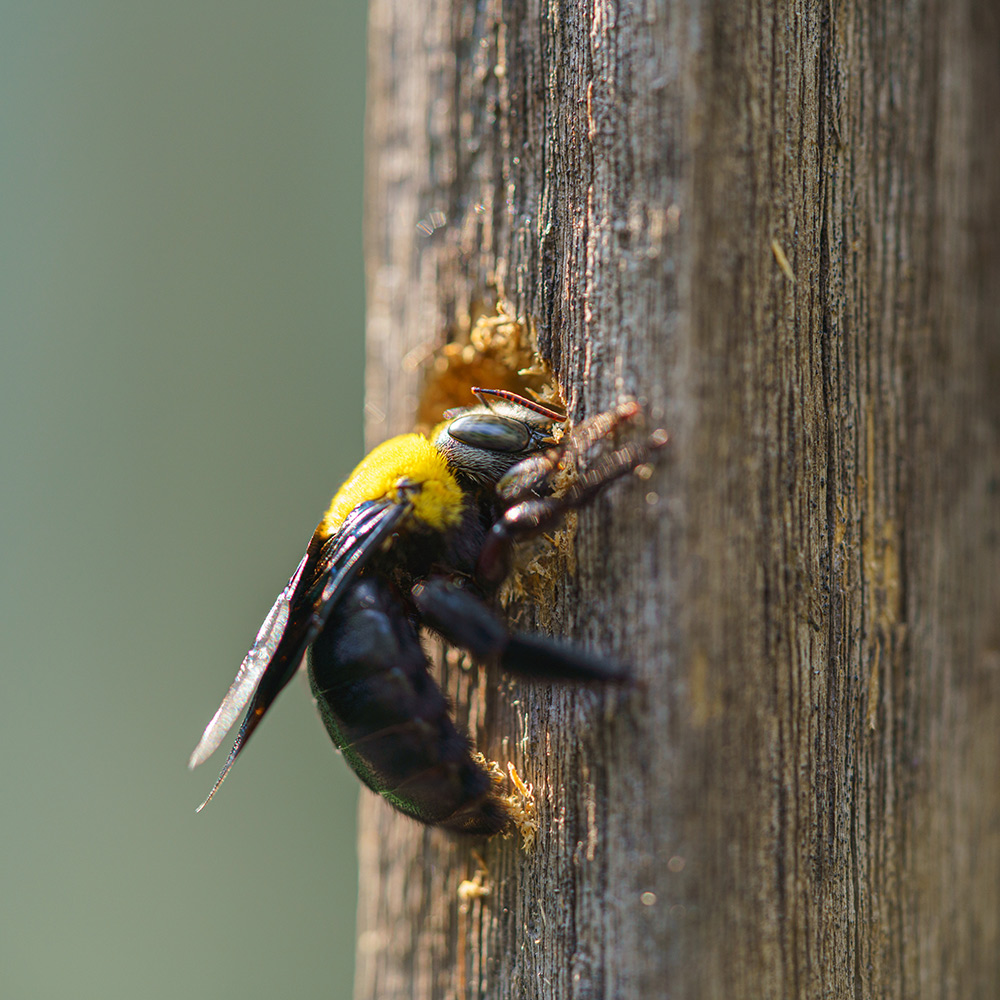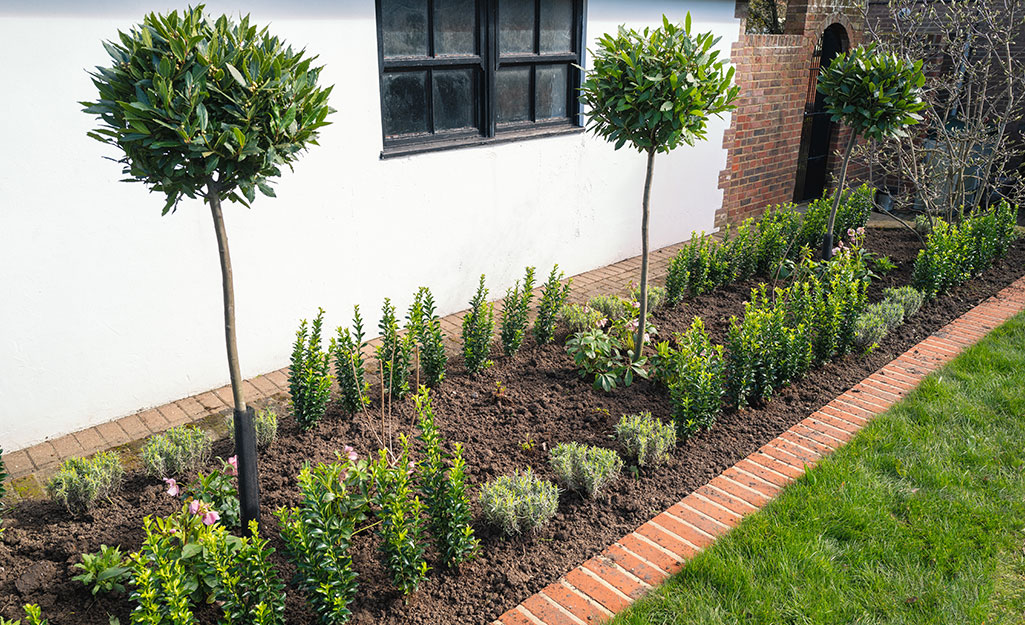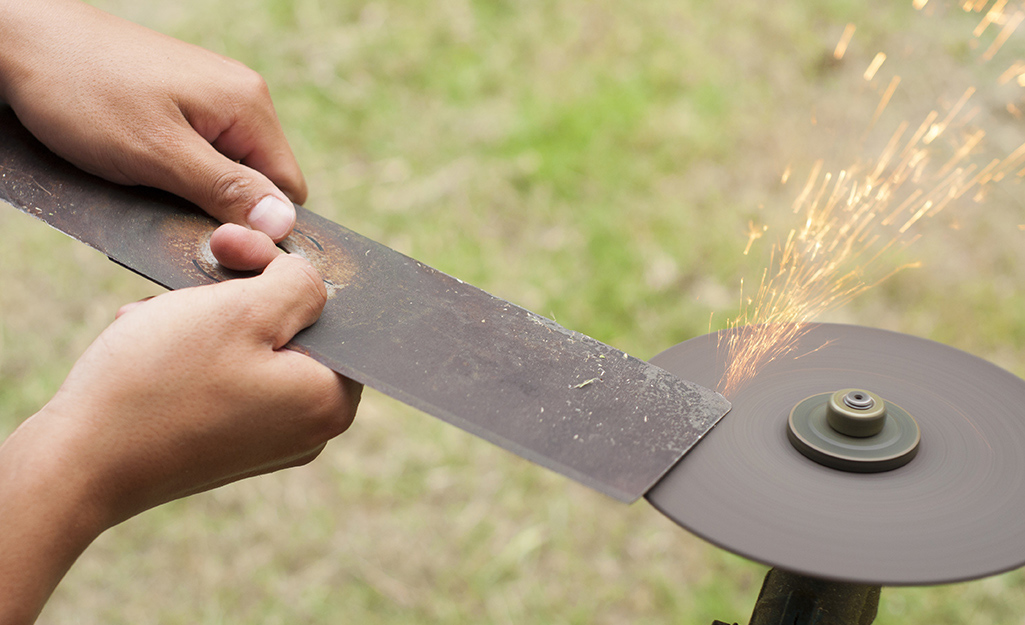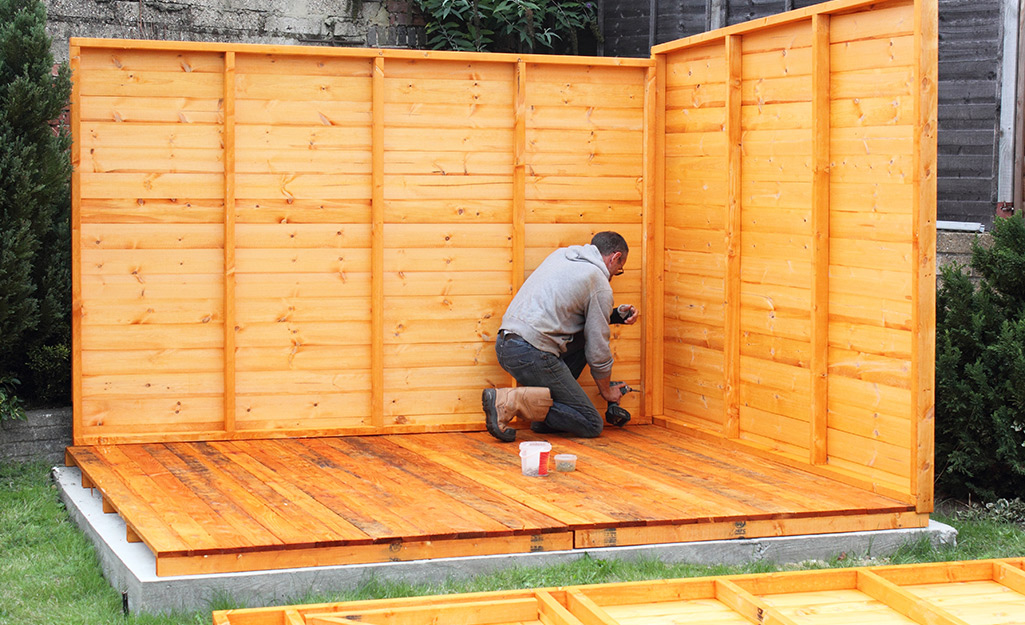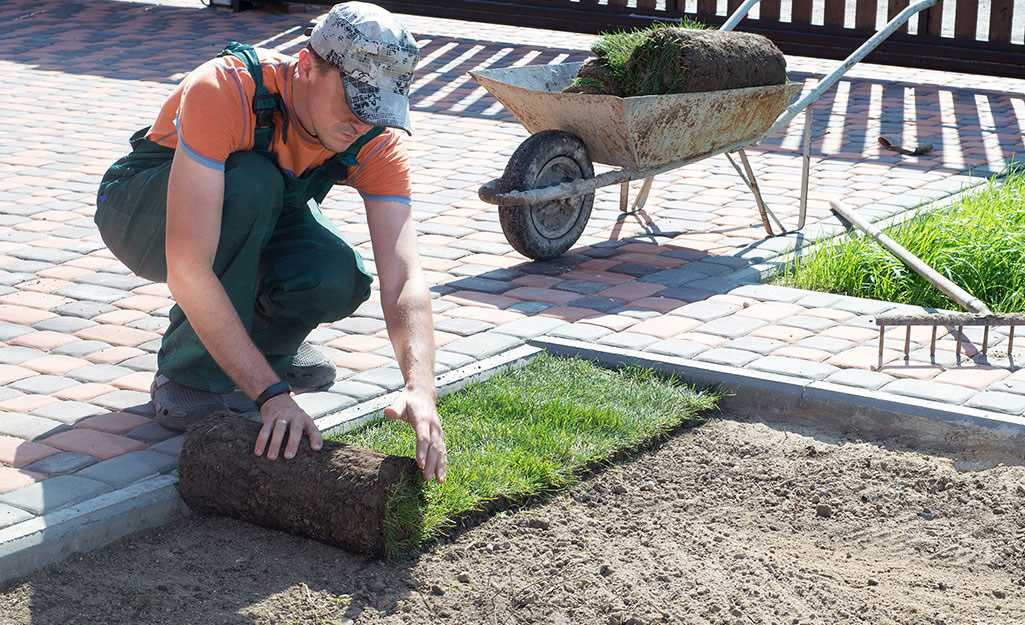
Do you have what you need to make your garden grow?


Garden Center
Shop Outdoor and Garden Supplies Near You
Shop Plants Online
Garden Project Calculators
;Resize=(703,395.44))
Grass Seed Calculator
When you're ready to seed your lawn, our calculator helps you estimate the amount of grass seed you'll need to get the job done.
;Resize=(703,395.44))
Mulch Calculator
Enter your preferred material, the square footage and mulch depth of the coverage space for accurate results.
;Resize=(703,395.44))
Fencing Calculator
We'll calculate the amount of fencing you should purchase based on your property needs.
Shop Outdoor and Garden Brands
Frequently Asked Questions About Gardening
How do I treat weeds?
Weeds are likely poking through in the garden beds, even if you put down mulch to keep them at bay. Pull out weeds from the root in edible gardens, and dig up the roots if the weed snapped off without them. Be sure to get rid of weeds before they go to seed. If you'd like to treat weeds with weed killer, check that it's safe for bees, other pollinators, and pets — and wear a respirator mask and heavy-duty rubber gloves to ensure that it doesn't touch your lungs or skin.
Is my yard dead?
It could be, but it's also likely just taking a break during those soaring summer temps. Cool-season grass goes dormant in the summer, so it's alive but sleeping. Here's how you can check to see if it's dormant: If you can easily pull out a blade of grass with no resistance, it's time to plant new sod or grass seed because the grass is a goner. Water dormant lawns deeply but not often. Warm-season grass needs water every few days in the summer. It should stay green if it's healthy.
When should I water my garden?
Ideally, water early in the morning. The next best time is in the evening, when the sun is setting. A noon or mid-day watering will evaporate quickly, so come back with an evening watering. This applies to whatever you're growing: grass, trees, veggies, and plants. Give all the plants a thorough drink. The plants still need hydration regardless of the time. Depending on your climate, grass type, and lawn health, you may also want to look into applying an organic lawn fertilizer.
What are some tips to keep my garden healthy?
After you've planted your plants or flowers, make sure they're hydrated and well-fed. Choose a synthetic or an organic fertilizer that fits your needs and give your garden a boost. You can even find one that's formulated for whatever you're growing, whether you need a tomato fertilizer, shrub fertilizer, or a general garden fertilizer blend. Only apply as often as recommended on the packaging. More is not better here. Be sure to water immediately after, as directed, so the fertilizer won't burn the plants.
Do patio misters cool the air?
When you need a break from working in the yard, shelter under a patio umbrella or covered gazebo. Add awnings and shade sails to the shed or house to create shady spots. However, sometimes shade isn't enough because it's too humid out. That's when a patio mister or misting fan can help cool the air and turn a stifling afternoon into a refreshingly relaxing day. Go back to enjoying the sun when that water-cooled air is ready.
How can I do a quick backyard makeover for entertaining?
Spending time with friends in gorgeous weather makes the season even more special. But you don't need to do a full backyard makeover or to create your patio collection from scratch to do it. Even a minor backyard refresh can make a big difference. Outdoor string lights, new outdoor lounge furniture, or even an outdoor rug can breathe new life into a backyard oasis.
Garden Project Ideas
The Home Depot Garden Center at Phil/Oregon Ave
As we continue deeper into summer, your landscaping and garden will weather more heat and sun than earlier in the year. You'll want to consider how to keep things cool with shade, irrigation, and proper tending. Just like we can get sunburned, perennials and grass can dry out, and trees can lose their leaves prematurely. We've got advice to make it through the hotter months with flying colors.
Lawn Repair and Patching
Scorched, or burnt, grass has an oddly shaped discolored area that isn't green. It happens when a reflective surface shines continuously on your lawn or metal or plastic sits on the grass and bakes in the sunlight. You'll often find it once you disturb something that's been sitting out in the yard, like a sprinkler or garden hose. Car windows or mirrors can also scorch grass when the sun angle is right.
Water burnt grass well and wait a week or so. You should see the signs of life returning by then. If it's damaged beyond repair by pet behavior or extreme wear, you'll need to replace the grass or use patch and repair seed to fix it up.
Whether you're patching a lawn or doing upkeep on your current one, keep in mind which type of grass it is. Match the grass type to your lawn if you're doing patch repair. When planting new grass, choose a variety that works with the amount of sun your lawn gets. For example, if your lawn is shaded by trees and gets partial shade or dappled sun, make sure you plant sod that prefers shade.
Care for Your Shrubs and Trees
When you're making sure your garden is watered, don't forget about the shrubs and trees. They may need less watering than delicate flowers or vegetable plants, but they can still get dry and parched in the summer heat. It's not hard to learn how to water shrubs and trees — just aim the water at the roots. It'll help prolong the greenery and blossoms and keep it from drying out.
Also, check for damaged areas on the bushes and trees. Pests can wreak havoc on your greenery if you don't catch them in time. Look for a network of raised lines on the bark, leaves full of holes, or spots on leaves or bark. When your leaves look like lace, insects or caterpillars are eating them. Spots may indicate many issues ranging from bugs to fungus. Those scar-like lines on tree bark could mean your tree is infected with borers, an insect that lays eggs inside the bark and then burrows out after it hatches. Any of these issues should be researched and cared for as soon as possible, as they may ultimately end the life of your tree.
Grow Your Own Herbs
For savory flavors to accent your homegrown produce, try herb gardening. They grow easily in pots, both indoors and outdoors, and are generally low-maintenance. If you grow herbs outdoors, stick to heat-loving herbs that'll endure the summer temperatures, and consider a hanging herb garden.
It can be tricky to plant herbs in the ground, as many of them — especially mint — are invasive and will take over your yard. So just keep them in small decorative pots on a sunny porch, window sill, or even as a beautiful hanging garden on a wall. Herbs also work well in a hydroponic garden, which means they don't grow in regular black dirt. Instead, they grow in a mixture of rock chips, sand, or perlite.
Vines as Decorative Shade
Plant vines to climb a trellis or arched arbor to provide both shade and beauty. Go with native viney plants to attract bees, butterflies, and other pollinators. Wisteria, honeysuckle, and morning glories are common options for creating a shady and beautiful archway or pathway. Remember to match your vine plants to how much sunshine you receive, as not all of them thrive in full sun. As a bonus, many vines put out sweet-smelling flowers with a delightful fragrance you can enjoy.
Find Your Summertime Landscaping Supplies Today
No matter if your perfect summer includes grilling, gardening, relaxing, or starting outdoor DIY projects, we've got you covered. Make the most of these lengthy evenings and early mornings to enjoy all the season has to offer. Shop online at your leisure, on our mobile app anywhere you like, or in the aisles of your Phil/Oregon Ave store.
Nearby Stores
Find Another Store
1651 S Columbus Blvd
Philadelphia, PA 19148
2.37 mi
Mon-Sat: 6:00am - 9:00pm
Sun: 8:00am - 8:00pm
5342 W Baltimore Pike
Primos-secane, PA 19018
6.51 mi
Mon-Sat: 6:00am - 10:00pm
Sun: 7:00am - 8:00pm
2539 Castor Ave
Philadelphia, PA 19134
7.28 mi
Mon-Sat: 6:00am - 10:00pm
Sun: 7:00am - 8:00pm
)
;Resize=(300,300))
)
.jpeg?im=Crop,rect=(363.69230769230774,1.2307692307692308,958.7692307692308,958.7692307692308);Resize=(300,300))
;Resize=(300,300))
;Resize=(300,300))
;Resize=(300,300))
;Resize=(300,300))
)
)
)
)
)
)
)
)
)
;Resize=(300,300))
;Resize=(300,300))
)
)
)
)
;Resize=(300,300))
)
)
;Resize=(300,300))
;Resize=(300,300))















